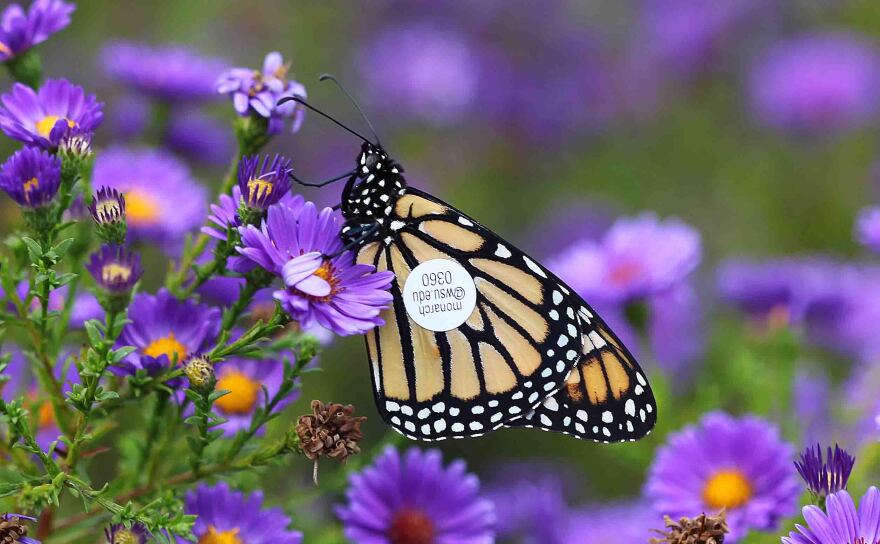If you’re lucky enough to spot a lacy monarch butterfly as it heads south for winter, look closely. You might see something unusual on its wing.
In a town in northern California, a young girl noticed a white sticker with an email address on a butterfly’s wing when it landed on her garage door.
“She took note and emailed me, so it proved the system worked,” said Dr. David James, an entomologist at Washington State University.
James is a guy who is fascinated by bugs. He’s tracking western monarch butterflies. The sticker the girl saw on the butterfly had his email printed on it.
The monarch butterfly has been studied for decades east of the Rocky Mountains, but much less is known about western monarchs. Scott Black, executive director of the conservation group Xerces Society, says there has been a 90 percent decline of the monarch in North America, which is why tagging is important work.
“[Tagging] will really help us understand the movements of these butterflies and will help conservationists prioritize areas for protection and restoration, which is vital if we hope to conserve them,” Black said.
While the monarch butterfly isn’t yet on the endangered species list, the Xerces Society and others believe the insect meets the criteria.
For James in Prosser, news of butterflies’ whereabouts comes slowly from what he calls “citizen scientists” who email him. But he also relies on inmates at the Walla Walla State Penitentiary for his research.
“They have been doing most of the rearing of the butterflies we’ve been tagging. But in captivity, particularly with the prisoners at Walla Walla, they’re able to rear them very successfully. So out of 100, we’ll get about 80,” James said.
By comparison, Washington State University scientists generally only raise 50 butterflies. James says researchers are in the process of releasing 2,500 butterflies from the prison before the weather turns cold. And he’s hoping to prove what he strongly suspects — that the monarchs born here may fly farther than California, all the way to Mexico.






